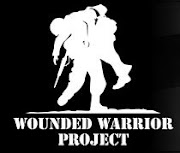 THE WOUNDED WARRIOR PROJECT
THE WOUNDED WARRIOR PROJECT
Alex Presman
Alex Presman
Alex’s time in the military was up on December 30, 2002. He didn’t have to go to Kuwait to participate in the invasion of Iraq, but this was something he wanted to do for the United States, his adopted country and a land he had come to love. So, he extended his time in the Marine Corps, arriving in Kuwait on February 14, 2003.
He spent his first three months transporting medical supplies and munitions to units in the field; and in May 2003, when his unit asked for volunteers to move forward into Iraq, Alex went. From that point on, it was constant combat and scorching sand until July 15, 2003, when Alex was wounded.
That day, he was manning an M-240 machine gun in a Humvee as part of a convoy from Diwanya to Baghdad to pick up medical supplies. They made a rest stop along the way, and Alex stepped on a land mine – what would later come to be known as an improvised explosive device (IED) – that Baathist forces had planted in the sand.
The blast caused severe injuries. Most of his left foot was blown off; later the whole foot had to be amputated. A large chunk of flesh was torn from the calf of his right leg. He suffered shrapnel wounds in both arms and both legs.
Alex was evacuated to a field hospital, eventually making his way to the Army’s Landstuhl Regional Medical Center in Germany and on to Bethesda Naval Medical Center in the Maryland suburbs of Washington, D.C. There, the final amputation of his left foot was done. Alex had four surgeries in all.
Recuperation: He went on to Walter Reed Army Medical Center for prosthetic care and rehabilitation, and said he was happy with the rehabilitation program there. However, he explained that it was a lot of work: “I can’t say I loved it, but that’s what had to be done. Right now, I’m walking. So I’m grateful.”
Involvement with Wounded Warrior Project: Like most injured troops, Alex’s first contact with the Wounded Warrior Project came when someone showed up in his hospital room to give him a WWP backpack filled with clothing, toiletries, and comfort items. Over time, the organization helped Alex with his benefits from the armed forces and the Department of Veterans Affairs (VA).
“They helped me out,” he said. “They really took care of me. The Wounded Warrior Project is like a big family. I’m glad the organization exists. They really do help.”
At the time of this interview, Alex was studying business at Pace University in New York City, planning to see where life took him after he attained his degree.






No comments:
Post a Comment